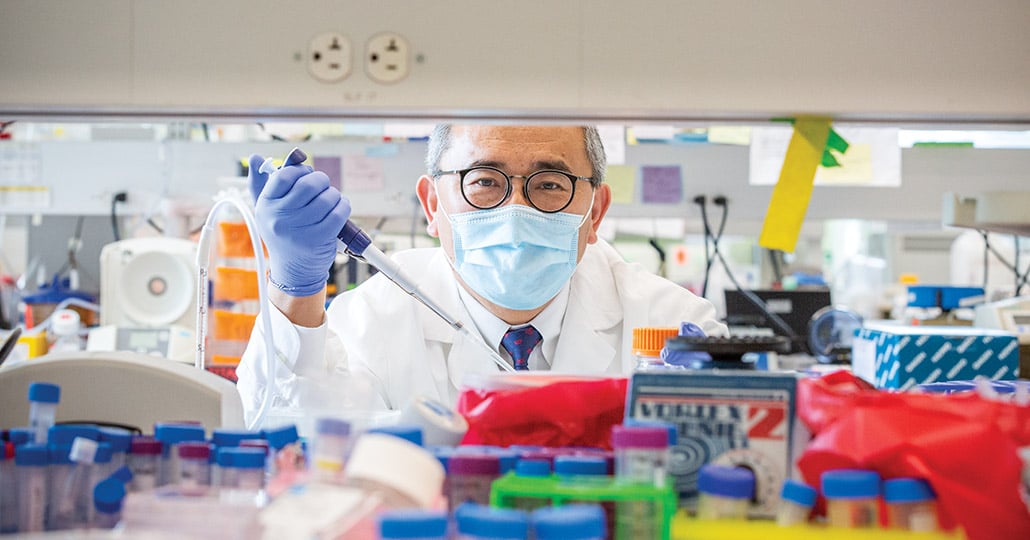THE PANDEMIC
Heavy Mettle
The worst health crisis in a century brings out the best in Cleveland Clinic caregivers.
Caregivers departed Cleveland in April 2020 to help treat patients with COVID-19 in New York City. | Photo: Stephen Travarca
As Severe Acute Respiratory Syndrome Coronavirus 2 (SARS-CoV-2) — the pathogen that causes COVID-19 — made its deadly march around the globe in 2020, Cleveland Clinic rose swiftly and decisively to unprecedented challenges. The health system created its own coronavirus testing platform; developed a COVID-19 risk prediction model that it shared with other healthcare organizations; established best practices for keeping patients and caregivers safe; and provided guidance for the public, the business sector and government officials.
During the first wave of the pandemic in the United States, an academic building on Cleveland Clinic’s main campus became a temporary surge hospital in less than a month. Working round the clock, crews transformed the Sheila and Eric Samson Pavilion into Hope Hospital, complete with hundreds of beds. Fortunately, successful curve-flattening measures averted a surge and the pavilion was restored to its original state.
In hard-hit locations on the homefront and abroad, Cleveland Clinic physicians and nurses answered the call. They served as front-line reinforcements at New York-Presbyterian hospitals in New York City and at Henry Ford Health System in Detroit. In England, where Cleveland Clinic London will open an outpatient facility this year and a hospital in 2022, they came through to assist with the National Health Service’s pandemic response. And in the United Arab Emirates, caregivers from the U.S. joined colleagues at Cleveland Clinic Abu Dhabi to share best practices in the fight against COVID-19.
“Our caregivers are our heroes. They’re engaged. They’re compassionate. And they’re doing exceptional work throughout this pandemic.”
CLEVELAND CLINIC CEO AND PRESIDENT TOM MIHALJEVIC, MD
“It really felt like it was a calling,” says Lauren Lowery, PRN, an ICU nurse from Cleveland Clinic’s main campus who was part of the mercy mission to New York City. “We’ve all gone into a profession where we’ve chosen to go help those in need.”
Donors have stepped up, too. As of December 2020, Cleveland Clinic’s COVID-19 Emergency Response Fund had raised more than $25 million in in-kind support and financial support. This generosity helps provide meals, lodging, comfort stations and other services for caregivers on the front lines and their families.
Philanthropy is also supporting the work of Cleveland Clinic’s new Global Center for Pathogen Research and Human Health, which has scientists and clinicians at the Lerner Research Institute in Cleveland and the Florida Research and Innovation Center in Port St. Lucie, Florida, collaborating to uncover the mechanisms of infectious agents and expedite critically needed cures and treatments. “Globalization and global warming have left us vulnerable to widespread disease,” says Jae Jung, PhD, Director of the center. He and his colleagues are working to stop not only COVID-19, but also the next pandemic — before it starts.
Developing stabilized vaccines that don’t require refrigeration is a priority. “If we can stabilize vaccines,” Dr. Jung says, “we can save the lives of people around the world who desperately need help.”

Jae Jung, PhD, is the Director of the new Global Center for Pathogen Research and Human Health. | Photo: Denise Crew
